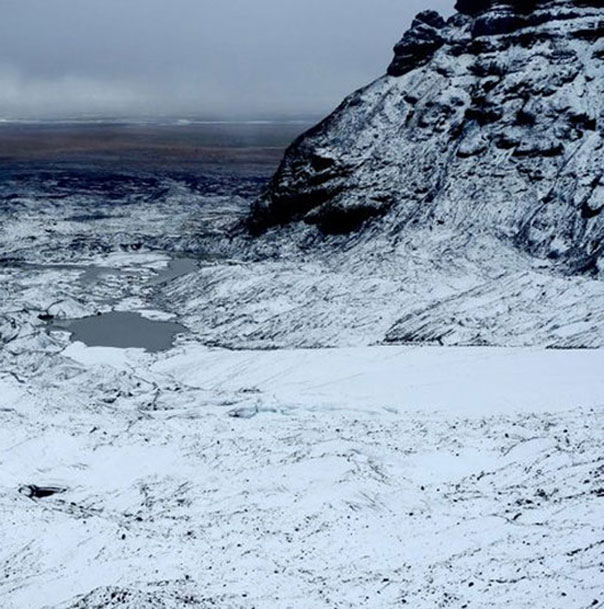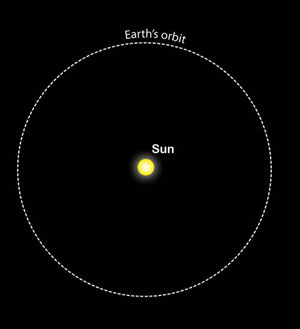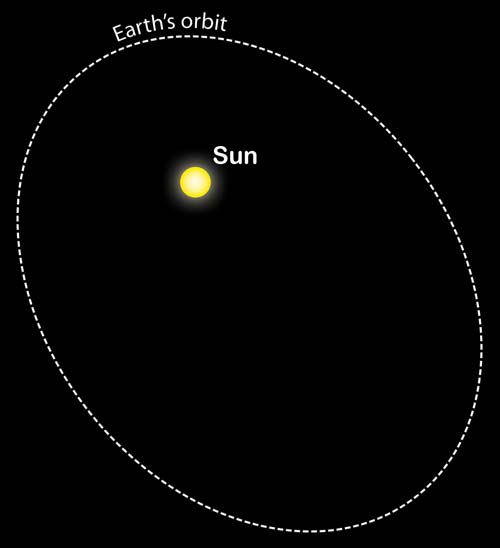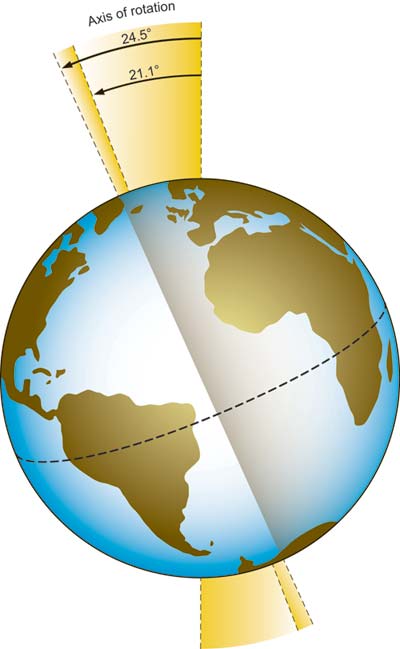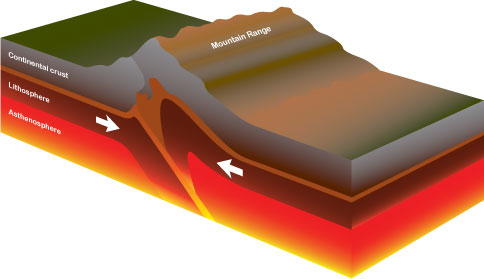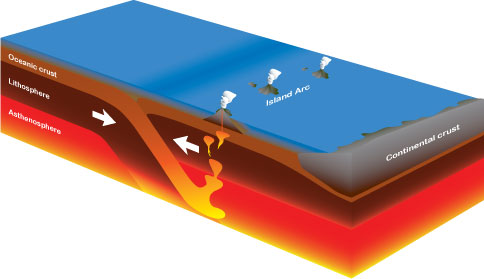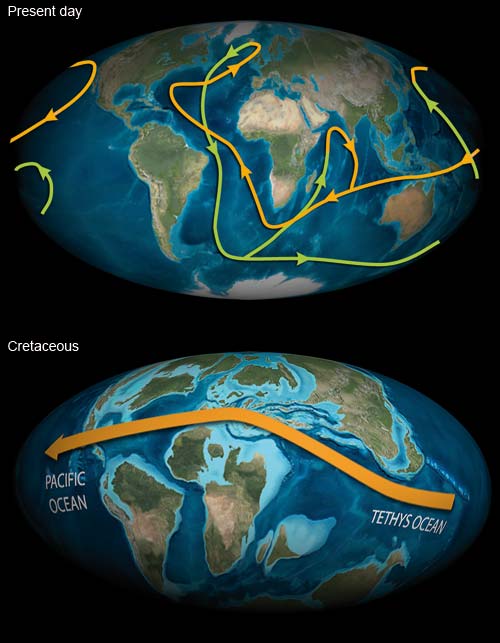What causes the Earth's climate to change?
We think of the climate we enjoy today as normal, however the Earth’s climates are always changing.
At times, Britain has been hot enough for hippos to live in Norfolk. At other times ice has covered the country for tens of thousands of years.
Global climate change has usually occurred very slowly over thousands or millions of years. For further details look at our Climate through time poster or online map.
Today our climate is changing quickly by comparison.
Hotter or colder?
Here are some of the many factors that can cause the Earth's climate to get hotter or colder:
Strength of the sun
Almost all of the energy that affects the climate on the Earth originates from the Sun.
The energy emitted by the sun passes through space until it hits the Earth’s atmosphere.
Only about 40 per cent of the solar energy intercepted at the top of the atmosphere passes through to the Earth’s surface.
The rest is reflected or absorbed by the atmosphere. The energy output of the sun is not constant, it varies over time and it has an impact on our climate.
Changes in the Earth’s orbit
The Earth’s orbit around the Sun is an ellipse, not a circle but the ellipse changes shape.
Sometimes it is almost circular and the Earth stays approximately the same distance from the Sun as it progresses around its orbit.
At other times the ellipse is more pronounced so that the Earth moves closer and further away from the sun as it orbits.
When the Earth is closer to the sun our climate is warmer.
Changes in the orientation of the Earth’s axis of rotation
The Earth rotates around an axis (imagine a line that joins the north and south poles) but the Earth’s axis is not upright, it leans at an angle.
This angle changes with time and over about 41 000 years it moves from 22.1 degrees to 24.5 degrees and back again.
When the angle increases the summers become warmer and the winters become colder.
Quantity of greenhouse gases in the atmosphere
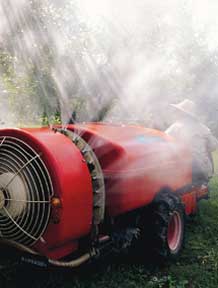
These include carbon dioxide, methane and water vapour.
Of these three, water vapour makes the greatest contribution to the greenhouse effect because there is more of it.
These gases trap solar radiation (electromagnetic radiation emitted by the Sun) in the Earth’s atmosphere, making the climate warmer.
Carbon dioxide content of the oceans
The oceans contain more carbon dioxide (CO2) than the atmosphere and they can also absorb CO2 from the atmosphere.
When the CO2 is in the oceans it does not trap heat as it does when it is in the atmosphere.
If CO2 leaves the oceans and moves back into the atmosphere this can contribute towards a warmer climate.
Plate tectonics and volcanic euptions
Over time, plate tectonic processes cause continents to move to different positions on the globe.
For example, Britain was near to the equator 300 million years ago, and therefore was hotter than it is today. For further details look at our Climate through time poster or online map.
The movement of the plates also causes volcanoes and mountains to form and these too can contribute to a change in climate.
Large mountain chains can influence the circulation of air around the globe, and consequently influence the climate. Warm air might be deflected somewhere cooler by the mountains.
Volcanoes affect the climate through the gases and dust particles thrown into the atmosphere during eruptions. The effect of the volcanic gases and dust may warm or cool the Earth's surface, depending on how sunlight interacts with the volcanic material.
Ocean currents
Ocean currents carry heat around the Earth.
The direction of these currents can shift so that different areas become warmer and cooler.
Oceans store a large amount of heat, so that small changes in ocean currents can have a large effect on coastal and global climate.
Vegetation coverage on the land
On a global scale, patterns of vegetation and climate are closely correlated.
Vegetation absorbs carbon dioxide and this can buffer some of the effects of global warming.
Meteorite impacts
Nowadays, most of what is on the Earth stays on the Earth; very little material is added by meteorites and cosmic dust. The only material lost to space is in space hardware.
However, meteorite impacts have contributed to climate change in the geological past; a good example is the Chicxulub crater, Yucatán Peninsula in Mexico.
Large impacts such as Chicxulub can cause a range of effects that include dust and aerosols being ejected high into the atmosphere that prevent sunlight from getting through. These materials insulate the Earth from solar radiation and cause global temperatures to fall; the effects can last for a few years (Kring, 2007).
After the dust and aerosols fall back to Earth, the greenhouse gases (carbon dioxide, water and methane), caused by the interaction of the impactor and its 'target rocks', remain in the atmosphere and can cause global temperatures to increase; the effects can last decades (Kring, 2007).
Sum of the parts
Each of the above factors contribute to changes in the Earth’s climate, however the way they interact with each other makes it more complicated.
A change in any one of these can lead to additional and enhanced changes in the others.
For example, we understand that the oceans can take carbon dioxide out of the atmosphere:
When the quantity of CO2 in the atmosphere increases, the temperature of the Earth rises.
This in turn would contribute to a warming of the oceans. Warm oceans are less able to absorb CO2 than cold ones, so as the temperature rises, the oceans release more CO2 into the atmosphere, which in turn causes the temperature to rise again.
This process is called feedback.
References
Kring, D, A. 2007. The Chicxulub impact event and its environmental consequences at the Cretaceous-Tertiary boundary. Palaeogeography, Palaeoclimatology, Palaeoecology. Vol. 255, 4-21.
